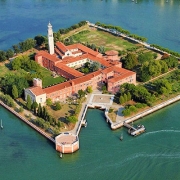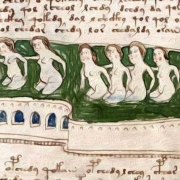Transcriptions: A dive into the ravine
Recently a client of ours commissioned the transcription of an old orphanage registry (1830-50). During the transcription due to the handwriting, we had difficulty deciphering the word: ‘liscivaia’. This is a predecessor of the term for ‘lavanderia’ or laundry. ‘Lisciva’ was actually laundry soap obtained by mixing water and ash together.
Plague-Spreaders and the Devil
‘Liscivaia’ in fact brought to mind a disturbing event that had taken place in Milan. After some research our transcripters and translators got to the bottom of the problem thanks to the help of art historians and literature professors. ‘Lisciva’ is mentioned by Alessandro Manzoni, eminent Italian novelist (1785-1873) in his book “Storia della colonna infame” (The Infamous Column) set in Milan in which he tells the true story of a poor barber from the “Ticinese” working class area of the city. The barber was brutally tortured and condemned to death on account of the very same ‘lisciva’. Let’s go back a bit in time to 1630, when the Black Death had just reached Milan. Some garments bought outside the town walls had brought the disease into the city and infection was rampant. An explanation was called for in order to quell the town’s folk. How had the Devil managed to take over? Who was helping him? Mass panic was dangerous and uncontainable so the church began a hunt for scapegoats, torturing and condemning to death those considered responsible; witches, heretics and plague-spreaders, who they claimed were propagating evil.
Horrendous torture in Milan
The Commissioner for Public Health accused the poor barber, Gian Giacomo Mora who, like all the barbers at the time, also carried out work as a surgeon. In addition to cutting beards and hair, he treated injuries, he carried out bloodletting, and applied miraculous ointments to clean wounds and relieve the suffering of plague victims.
The Spanish Guards inspected the back of Mora’s shop and found a suspicious and nauseating substance, the ‘lisciva’, which had traces of blood and other infected matter. In truth he had used this rudimentary detergent to wash the cloths that had been used for crude surgical procedures. Left out in the sun to dry they had now turned a revolting colour and had an unbearable smell. Suspicions were now confirmed; that substance was obviously being used to spread the plague and Mora was immediately arrested.
The public torture he was forced to undergo was unimaginable. He was hideously wounded with white hot irons, his bones were broken and his right hand was cut off along the route that took him to today’s ‘Piazza Vetra’ where he was burned at the stake.
Translation of the Memorial Stone
Gian Giacomo Mora’s house and shop were burned to the ground and his wife, children and relatives were thrown out of the city. In the place where Mora had once lived, as a warning to the local population, the Spanish government erected a granite column and an imposing memorial stone written in Latin. It was the well-known writer Pietro Verri, who later translated it into Italian.
This infamous site was bombed by the Allies in 1943. Today in Milan after a number of vicissitudes, in via Gian Giacomo Mora on the corner of Corso di Porta Ticinese there stands an unremarkable pink building with a small angular archway. A bronze sculpture by Ruggero Menegon (2005) has been mounted there and just opposite, but somewhat less visible, a small plaque struggles to maintain a place in an attempt to keep the memory of this tragic Milanese tale alive.
Today in Milan in Piazza Vetra there’s a pretty park full of trees in between two of the most beautiful churches in Italy, Sant’Eustorgio on the one side and San Lorenzo on the other. Let’s not deceive ourselves however because up until a few decades ago the area was one of the poorest and most destitute in Milan. In 1600 the air was sinister and unhealthy. In the Ticinese quarter, very young children worked tanning leather using glass (vetro) hence the name ‘Piazza della Vetra’. It is on this foul site that an area for public torture and execution of those condemned to be burned at the stake or hung at the gallows appeared.
So thanks to the transcription of a manuscript from the end of the 19th century Galactus staff have brought to our attention this “infamous” piece of history and literature which we had almost forgotten about.









